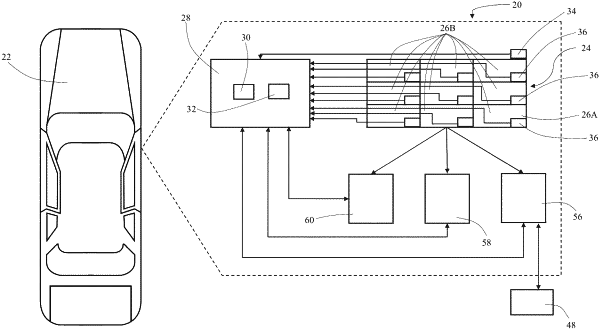| CPC B60L 58/20 (2019.02) [B60L 58/12 (2019.02); H01M 10/482 (2013.01)] | 20 Claims |

|
1. A supervisory computer for an energy management system of an electric vehicle, with the energy management system comprising a battery system configured to power the electric vehicle and comprised of a plurality of battery subsystems, with one of the battery subsystems further defined as an abnormal battery subsystem and with the remaining battery subsystems further defined as normal battery subsystems, the supervisory computer comprising:
at least one processor; and
at least one non-transitory computer-readable medium including instructions such that the processor is programmed to:
monitor a remaining state of charge, a capacity, and a resistance of the battery system;
monitor a remaining state of charge and a capacity of the abnormal battery subsystem;
calculate a low integration bound value from the remaining state of charge and capacity of the battery system and from the remaining state of charge and the capacity of the abnormal battery subsystem;
calculate a remaining energy value for all of the normal battery subsystems with respect to the low integration value;
calculate a remaining energy value for the abnormal battery subsystem;
summate the remaining energy values of the normal battery subsystems and the abnormal battery subsystem to determine a global remaining energy value for the battery system;
calculate an actual energy consumption rate value of the electric vehicle based on at least one vehicle consumption rate variable;
calculate a remaining travel range value based on the global remaining energy communicate with a global navigation satellite system (GNSS) network to ascertain a location of the electric vehicle and a destination;
calculate a travel distance value from a route between the location of the electric vehicle and the destination;
compare the remaining travel range value to the travel distance value;
determine if the electric vehicle will reach the destination;
calculate a maximum energy consumption rate value based upon the travel distance value; and
adjust the vehicle consumption rate variable to lower the actual energy consumption rate value to be less than or equal to the maximum energy consumption rate value if the remaining travel range value is less than the travel distance value.
|